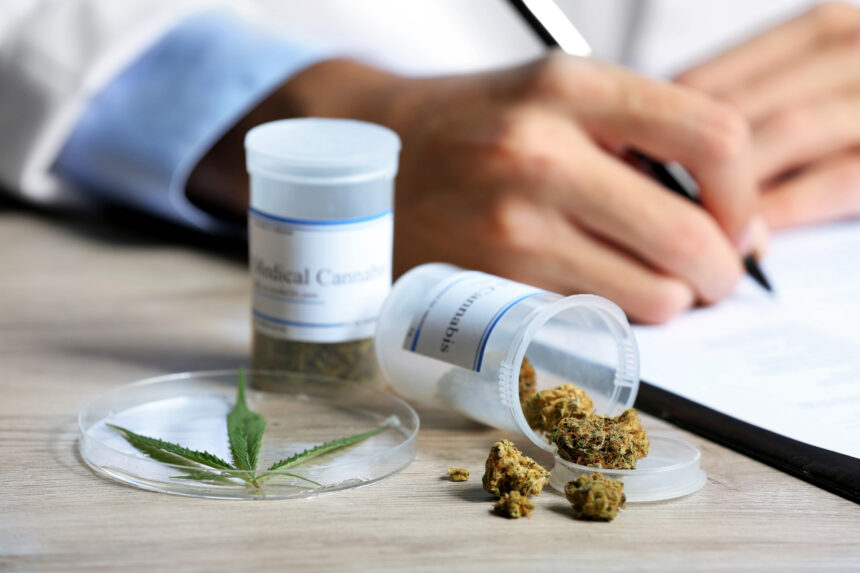Medical marijuana has been talked about a lot more in healthcare and alternative treatment talks in the past few years. As laws and views change, it’s important to know the basics of medical marijuana, including its possible benefits, risks, and legal issues. This blog tells you everything you need to know about medical marijuana.
How to Understand Medical Marijuana
Recognizing the medicinal potential of cannabis through the use of its constituent parts—most notably THC (tetrahydrocannabinol) and CBD (cannabidiol)—is essential to understanding medical marijuana. Cannabis has more than 100 different types of cannabinoids, and each one has unique health advantages.
While CBD is valued for its non-intoxicating nature and ability to reduce symptoms like pain, inflammation, anxiety, and seizures, THC is well-known for its psychoactive qualities and pain-relieving benefits. Using north carolina medical Marijuana entails utilizing these cannabinoids, either separately or in combination, to treat a variety of illnesses.
How Does Marijuana for Medical Use Work?
The endocannabinoid system in the body interacts with the cannabinoids in marijuana. This system is very important for controlling many bodily processes, such as mood, appetite, pain perception, and memory. Cannabis’ psychoactive compound, THC, binds to cannabinoid receptors in the brain and nervous system.
This is what makes people feel “high” when they smoke weed. CBD, on the other hand, doesn’t get you high but may help with other health problems.
Possible Advantages of Medical Marijuana
- Managing pain: The medical marijuana prescription is often used to ease the chronic pain that comes from diseases like arthritis, MS, and nerve damage.
- Nausea and Vomiting: It has shown promise in lowering nausea and vomiting in people who are getting treatment or who have diseases like HIV/AIDS.
- Neurological Disorders: Some study shows that medical marijuana may help people with epilepsy, Parkinson’s disease, and Tourette syndrome deal with their symptoms.
- Mental Health: CBD has been looked into in particular for its possible ability to help people with anxiety, sadness, and post-traumatic stress disorder (PTSD).
Different Types of Medical Cannabis
Medical marijuana comes in several types, such as:
- Dry Flower: Cannabis flower that can be vaped or smoked.
- Edibles: are drinks and foods that have cannabis extracts added to them.
- Tinctures and oils: are concentrated extracts that are mixed with oil or alcohol and put under the tongue.
- Cannabis-infused creams, lotions, and balms are put on the skin to help with the pain.
Possible Side Effects and Risks
Medical marijuana may help with some conditions, but it’s important to know about the risks and side effects that could happen, such as:
- Effects on the mind: Some people may feel anxious, paranoid, or psychotic, especially when they take a lot of THC.
- Mental Problems: Using marijuana can make it harder to remember things, focus, and coordinate your movements, which can affect your mental health.
- Reproductive Issues: Smoking weed can cause respiratory issues similar to those caused by smoking tobacco.
- Dependency and Addiction: If you use marijuana for a long time, you might become dependent on it, but the risk is usually smaller than with drugs like alcohol or opioids.
Legal Things to Think About
There are significant differences in the legal status of medical marijuana between nations, as well as between states or areas within a nation. People must be aware of the particular rules and legislation that apply to the usage of medical marijuana in their community.
This includes being aware of the legality of medical marijuana, the conditions under which it can be used, and the procedures involved in getting a prescription or card for the drug. In many states, to legally obtain medicinal marijuana, patients may need to see a licensed healthcare professional and get a recommendation or prescription.
Consultations and Rules
Seeking the advice of a licensed healthcare professional is essential when thinking about using medical marijuana as a therapy option. Medical practitioners can provide individualized recommendations based on a patient’s past medical history, current problems, and needs.
This guarantees that the right dosage and delivery techniques are used for medical marijuana safely and efficiently. To guarantee product quality, purity, and consistency, it is imperative to procure medical marijuana from reliable and credible vendors. Medical marijuana use carries fewer hazards when dosing instructions are followed and recommended parameters are followed.
Embracing Knowledge for Informed Choices
Medical marijuana shows promise as a treatment option for several health problems, helping people get better when other treatments fail. But there are risks, and making smart choices is important.
People can make smart decisions about their health care if they know about the possible benefits, risks, and legal issues that come with medical marijuana. If you want to know if medical marijuana is right for you, you should always talk to a medical provider.






